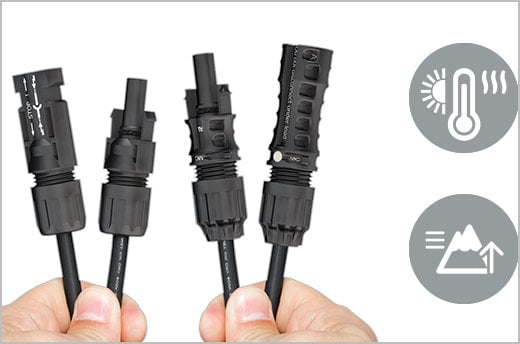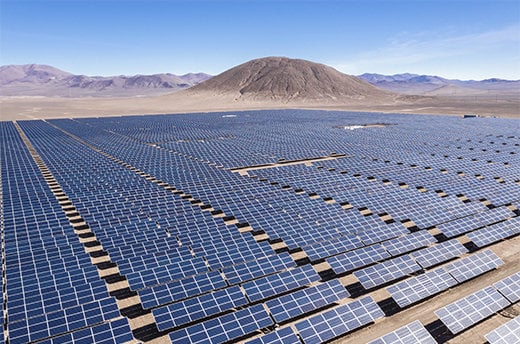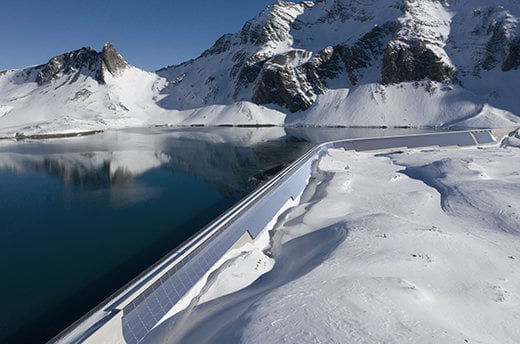www.ptreview.co.uk
29
'21
Written on Modified on
THE FIRST PV CONNECTORS FOR HARSH ENVIRONMENTAL CONDITIONS
Requirements for operating electrical installations in ambient temperatures over 70°C or at altitudes higher than 6,500 feet differ from the requirements for standard installations due to the different climate conditions. Yet, it is precisely in areas with such harsh conditions, like deserts and high mountain ranges, that offer large spaces and optimal solar radiation for efficient photovoltaic systems. The original Stäubli MC4 connector portfolio has a proven track record for such kind of applications.

The worldwide expansion of photovoltaic (PV) installations is also giving rise to new areas of application in challenging environmental conditions. About 35 % of the Earth’s land surface is covered by deserts, leading to a push for efficient uses of these otherwise unpopulated areas with little economic potential – like the installation of PV solar power plants in hot, dry deserts in South America, Africa, southern Europe and the Middle East.
Areas at high elevations also show significant potential for solar energy production. Thanks to their high elevation, PV plants in these regions produce about 50% more energy than those at sea level. The extremely high levels of solar radiation and consistently clear skies provide optimal conditions for high electricity yields. Europe’s high Alpine regions aren’t the only candidate areas for these types of plants; an increasing number of PV plants are being built in the Andes range in South America at altitudes of over 6,500 feet above sea level.

Safety standards at high temperatures
As a result of this market development, the Technical Committee TC82 of the International Electrotechnical Commission (IEC) will more carefully distinguish the requirements for different ambient temperature ranges and prepare the new edition of safety standards for PV modules, IEC 61730-1, for applications at operating temperatures of up to 70°C (98th percentile [1]). For applications at higher operating temperatures, such as installations in desert regions, the specifications of IEC TS 63126 will apply.
IEC TS 63126 identifies thermal requirements not only for PV modules, but also for added components like PV junction boxes or PV connectors, for two different temperature levels. The two categories for these modules are:
- Temperature Level 1: greater than or equal to 80°C (T98th[2])
- Temperature Level 2: greater than or equal to 90°C (T98th).
Section 6.3 of this technical specification lists the requirements for PV connectors according to IEC 62852 for use at the module temperature levels described above. The connectors’ upper limiting temperatures (ULT) are required to have the following minimum values:
- ULT for connectors used for installation of Level 1 PV modules: at least 95°C
- ULT for connectors used for installation of Level 2 PV modules: at least 105°C

Safety standards at high elevations
The requirements for insulation coordination in the safety standards for electrical products are usually designed for applications at altitudes up to 6,500 feet.[3] For applications at higher elevations, the requirements for clearances must be corrected because the lower air pressure reduces the electrical installations’ resistance to voltage flashover across the clearance. Therefore, the minimum clearance must be multiplied by a correction factor from Table A.2 of IEC 60664-1:2020 or verified with a correspondingly higher test surge voltage.
Stäubli as pioneer: the first PV connectors for high temperatures and high elevations
For over 20 years, Stäubli connector systems for DC photovoltaic applications have been known for their high contact quality and durability. Now, Original MC4 products from Stäubli are the first PV connectors to meet the requirements for installations in PV systems with module temperature level 2 according to the TÜV Rheinland test procedure. This means that Stäubli PV connectors have been successfully tested for PV installations in climate conditions up to at least 105°C.
This applies to the following types: MC4 (R60127190), MC4-Evo2 (R60127169), PV-ADXP4-S2 (R60127181), PV-ADX4-Evo (R60127171), PV-AZX4-Evo2 (R60149724). TÜV Rheinland has also verified the suitability of these types for use at elevations of up to at least 4000 m above sea level.
“We’re very pleased to be the world’s first manufacturer of PV connectors to meet this requirement. We can now point to these successful tests when recommending the original MC4 and MC4-Evo connectors to our customers for these forward-looking applications in harsh environmental conditions such as high elevations or hot climate zones,” says Guido Volberg, Senior Consultant Product Regulatory Affairs at Stäubli Renewable Energy.
www.staubli.com

